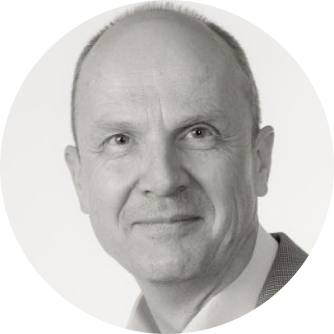 Interview with Tony Hoos, PFMD board member and VP Medical, Europe, Amgen.
Interview with Tony Hoos, PFMD board member and VP Medical, Europe, Amgen.
The European Parliament, along with the European Federation of Pharmaceutical Industries and Associations (EFPIA), recently played host to a wide range of stakeholders in healthcare as well as politicians and policymakers, as they asked the question, “Driving innovation in health: How does Europe remain a global leader in life sciences?” Tony Hoos, was invited to be a fireside chat speaker at this event, focusing on the topic: “Empowering patients to contribute to the innovation and medicines development process”.
Hoos used this platform to discuss the importance of patient engagement, of listening to patients to understand what their needs are, and of developing meaningful therapeutic options for them.
“We discussed the changing healthcare system, where stakeholders now need to make tough choices regarding what can and cannot be funded. Developing drugs in the most efficient and effective way possible was also up for discussion. Underlying all this was how it requires the involvement of patient, not only on the development side, but with all stakeholders who make decisions, including regulators, payers and health care providers,” he explains.
“That was my plea – if we want to change and evolve the system, and keep the healthcare systems sustainable, it will require full patient involvement.”
The patient’s role in the development and entire life cycle of all new therapeutic options, including medicines, devices, or other products, was discussed by panellists. “On the regulatory side we looked at good examples from the European Medicines Agency and also the US FDA, and we also articulated the need to involve patients in health technology assessments (HTA) or payer assessments.”
Fundamental to this is empowering patients, says Hoos; also discussed was the need for long-term relationships to be built and worked on over time as patients engage at all stages in the medicine life cycle – and again with the next medicine.
“Working with patients should not be on an ad hoc, once-off basis. It must be a longitudinal continuous process, from early ideas in research to the very end of the life cycle of a drug. There must be a continuous dialogue where you exchange information, and you build trust. Patients should give input into trial design, patients should have a look at what clinical study results mean, and then go even further in this dialogue as they develop further programs,” he advises.
It is not one patient fits all; Hoos notes that there are varying instances where patient involvement is helpful and may be required, and these may require different approaches and different skill sets from patients.
“If we want to understand what’s the burden of disease for you, you don’t need to be a patient expert at all, you can ask people who simply have the disease. But with other questions such as discussing study protocols and endpoints, study results, these are more expert patients, and patient advocates who have certain skills and abilities would be required.” Hoos added that in Europe patients can train in regulatory sciences and drug development to acquire these skills.
Ultimately, the meeting was in broad consensus that evolving the whole healthcare system and making it sustainable and affordable will necessitate a multistakeholder approach. “This will require a common understanding of regulators, HTA payers, patients, healthcare providers, industry, and may other parties. What we have seen historically is that the patient was always missing at the table, but this is changing big time,” stated Hoos.
Underpinning the day’s discussions was the title of the conference, and how Europe can remain a global leader in life sciences. According to Hoos, Europe must “advance quickly” when it comes to patient engagement.
“We need to speed up involving patients in drug development and unifying all stakeholders because otherwise Europe will lose a huge competitive edge. We see that in other big markets such as the US, the FDA has had a major progress and advances in patient involvement for some years and this could mean that Europe loses out.”
It was agreed at the panel discussion that a neutral forum where all stakeholders can come together is essential; Hoos says he was glad to inform his fellow panellists and the audience that PFMD fits that bill.
“The need for somewhere where we can exchange ideas and experience and work on building a framework for patient engagement was highlighted. When the regulators are doing one thing and the payors are doing another and industry does their thing, that’s fine, but unless all the stakeholders agree on how we want to approach patient engagement and what is a valid patient input, what data will we all accept – it is meaningless. If industry involves patients in a certain way and regulators or payers don’t accept it then we are in trouble. Consequently, we introduced PFMD as such a platform for multi-stakeholder exchange, which I think was very helpful to those present.”
Empowering patients to participate in innovation
Tags:

































































